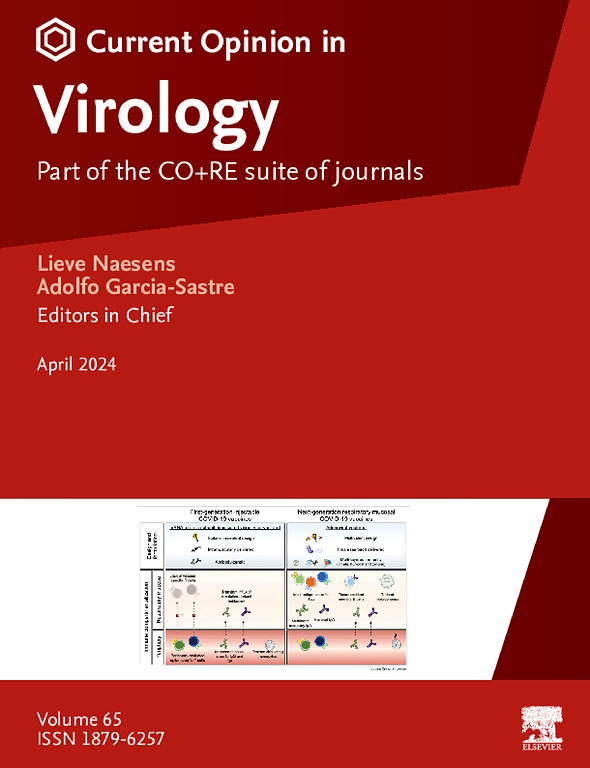小鼠对丙型肝炎病毒感染的屏障
IF 5.1
2区 医学
Q1 VIROLOGY
引用次数: 1
摘要
丙型肝炎病毒(HCV)不能感染小鼠,这一事实严重限制了它们作为HCV发病机制的小动物模型和HCV疫苗开发工具的使用。HCV在小鼠细胞生命周期的各个阶段都被阻断,原因是与宿主因子不相容,存在显性限制因子,以及有效的免疫应答。几个这样的块的分子机制已经被表征。逐步了解小鼠的这些局限性将有助于开发具有免疫能力的小鼠,使其能够完全支持HCV感染并表现出与受感染的人相似的疾病。本文章由计算机程序翻译,如有差异,请以英文原文为准。
Barriers to hepatitis C virus infection in mice
Hepatitis C virus (HCV) is unable to infect mice, a fact that has severely limited their use as small-animal models for HCV pathogenesis and as tools for HCV vaccine development. HCV is blocked at various stages of its life cycle in mouse cells, due to incompatibility with host factors, the presence of dominant restriction factors, and effective immune responses. Molecular mechanisms for several such blocks have been characterized. The stepwise understanding of these limitations in mice will enable the development of an immunocompetent mouse that can fully support HCV infection and exhibit disease similar to that of infected humans.
求助全文
通过发布文献求助,成功后即可免费获取论文全文。
去求助
来源期刊

Current opinion in virology
VIROLOGY-
CiteScore
11.80
自引率
5.10%
发文量
76
审稿时长
83 days
期刊介绍:
Current Opinion in Virology (COVIRO) is a systematic review journal that aims to provide specialists with a unique and educational platform to keep up to date with the expanding volume of information published in the field of virology. It publishes 6 issues per year covering the following 11 sections, each of which is reviewed once a year: Emerging viruses: interspecies transmission; Viral immunology; Viral pathogenesis; Preventive and therapeutic vaccines; Antiviral strategies; Virus structure and expression; Animal models for viral diseases; Engineering for viral resistance; Viruses and cancer; Virus vector interactions. There is also a section that changes every year to reflect hot topics in the field.
 求助内容:
求助内容: 应助结果提醒方式:
应助结果提醒方式:


